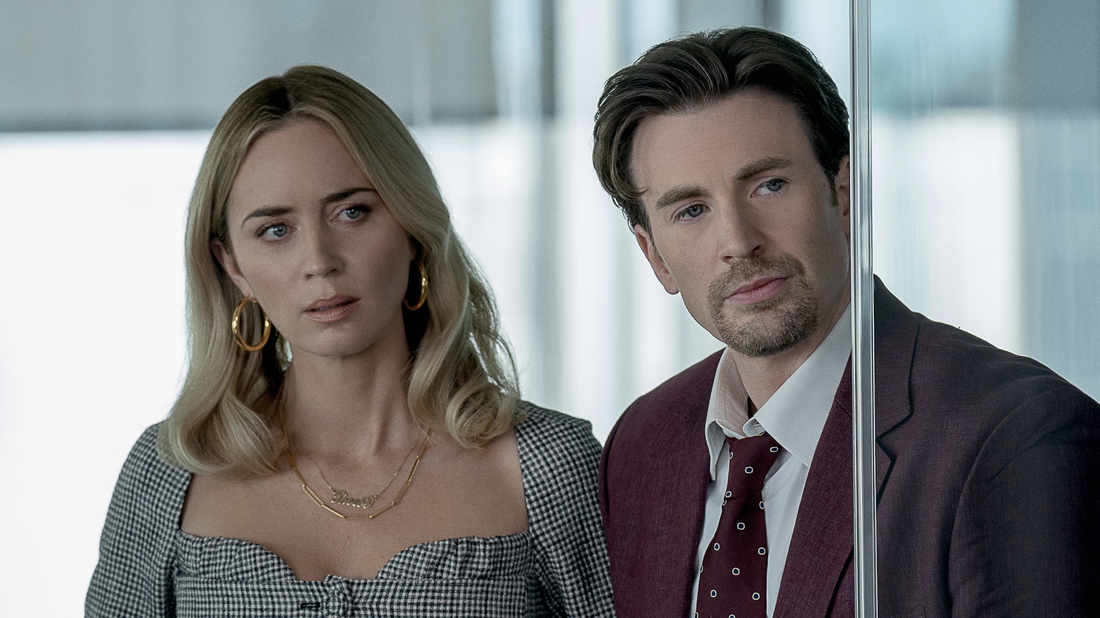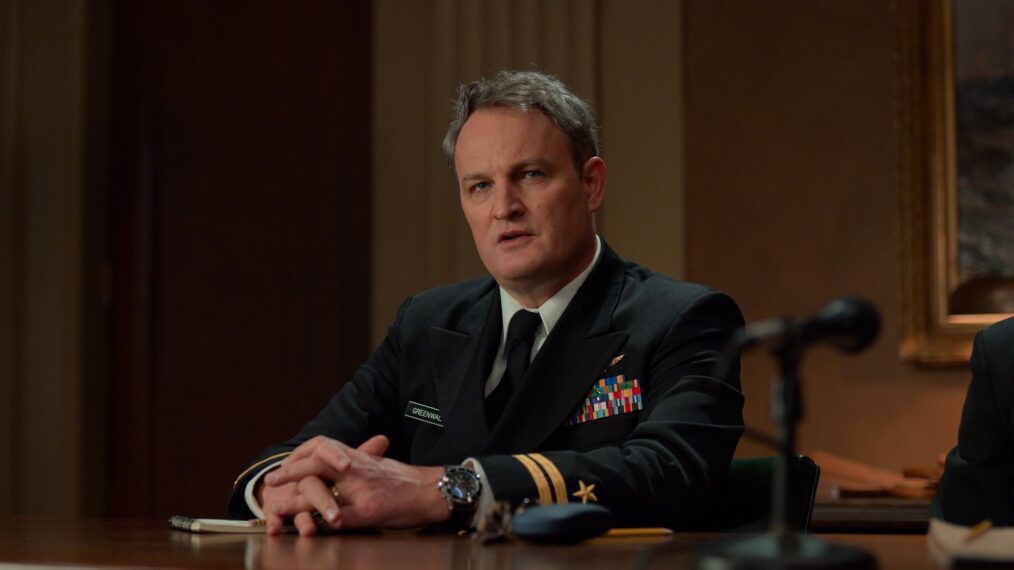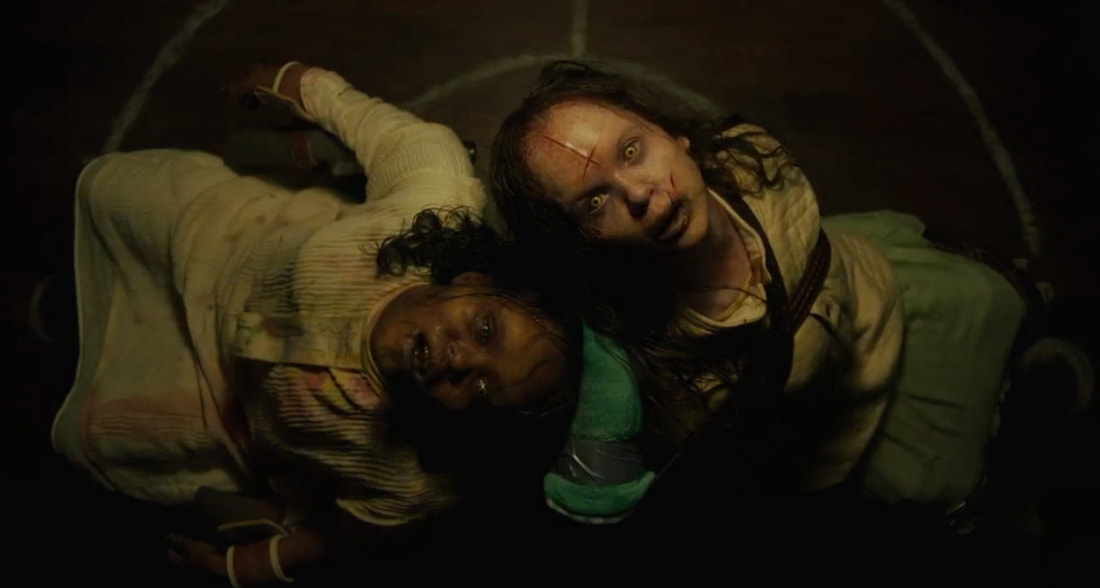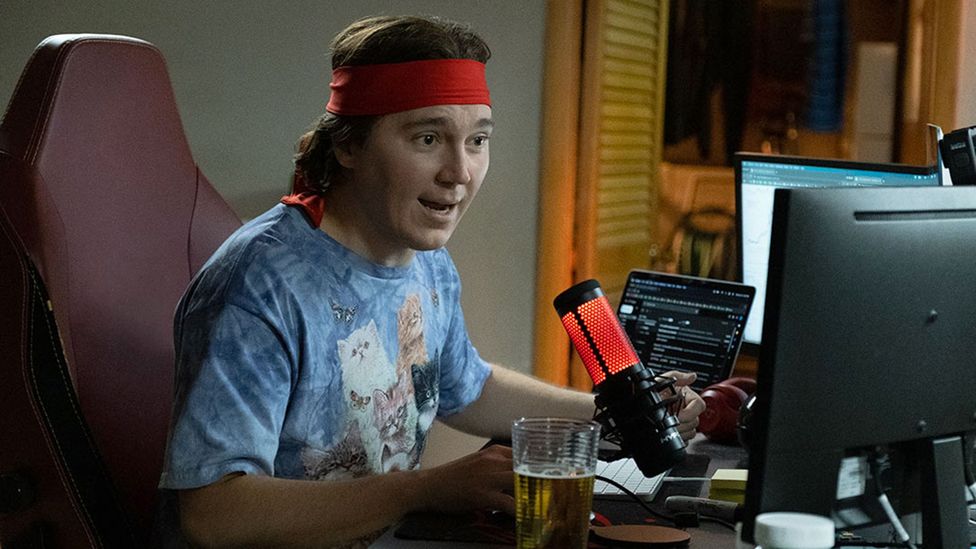|
by Philip Price Director: David Yates Starring: Emily Blunt, Chris Evans & Andy Garcia Rated: R (language, some sexual content, nudity & drug use) Runtime: 2 hours & 2 minutes Between dramatized series' like “Dopesick” and “Painkiller” to last year's unanimously praised documentary “All The Beauty And The Bloodshed” the whole world of the pharmaceutical scam and opioid crisis in America has been well-documented over the last few years. Director David Yates seemed to be in luck despite this barrage of similarly-themed content though, as I've only seen the Nan Goldin doc meaning this fictionalized telling of Evan Hughes' 2018 investigative feature of the same name was essentially fresh territory for me. That said, it's unfortunate “Pain Hustlers” or the first feature from Yates that has not been authored by J.K. Rowling since 2014's “Tarzan” and the first non-IP film he's made since 2005 is something he only seems tangentially connected to. That is to say that Yates, a Brit through and through, might have had a vision for how to tell this story when he read Hughes' piece, but he likely found this distinctly American story just that therefore implying the type of vision he then defaulted to. That default is naturally Scorsese-light as “Pain Hustlers” echoes recent output like “The Wolf of Wall Street” and similar films that came along in its wake a la “The Big Short,” “War Dogs” and most recently “Dumb Money.” Each of these films centers around unqualified individuals stumbling into incredible (if not always legal) situations that garner them untold amounts of money who then have to balance their greed with their inexperience before getting caught. As a piece of entertainment, this moves quickly and offers enough broad insight coupled with reaches for genuine emotion to track as something worthy of your time while being informative either as a whole or about certain aspects of this crisis not yet exposed. As a novice on the subject, I found the idea at its core - the exploitation of helping people for profit rather than the greater good - naturally compelling and the details of it fascinating which made me wonder why, by the close of the film, I had no real reaction to what I'd just experienced. Given the "outrageous" elements of the story and the long list of endearing talent on screen, it would seem this was a winner, and that Yates should stick to making more grounded material rather than return to the Wizarding World, right? Maybe so, but what is ultimately so underwhelming about “Pain Hustlers” is that despite having all the right pieces in play, that default vision results in something more rote than revolutionary. I'm not even saying this needed to be revolutionary (the movie is middle-of-the-road fine) and I'm not even saying it couldn't feel familiar (“Dumb Money” was absolutely derivative yet I bought into the protagonist as a real person), but while I know it wasn't his intent, it looks and feels as if Yates processed what he shot through a filter of snappy editing, funky soundtracks and pretty people doing despicable things that mimics more than it makes it its own meaning it doesn't feel much like it matters. A kind of perfect illustration of all bark, no bite. It's a difficult thing to explain. The timing isn't the best, the execution is uninspired, and while I have always adored Emily Blunt as a performer I don't know that I buy her as Liza Drake - a former stripper who lies her way into a pharma rep position only to have her work ethic and ingenuity take her farther than anyone else in the company - or more worrisome, I don't know that either myself or the movie buys Drake as someone with the ability to grow a conscience. The movie is framed with these talking head interviews with different members of the cast (which is all Chris Evans does here: provide context and exposition) and they set up Drake as this ruthless, conniving businesswoman who takes no prisoners and would die before donating a dollar to charity, but by the end of the film we're led to believe the resolution of the film rests on her being the complete opposite. Honestly, Andy Garcia as this eccentric John Kapoor-type figurehead comes out best (every time it showed his real dog standing next to an identical plush I lost it), but at least “Pain Hustlers” gifts us the present of Brian d'Arcy James singing "Closing Time" making this not the calamity its characters find themselves in, but still ... not good ... and not nearly as savage as it should have been.
0 Comments
This piece was written during the 2023 SAG-AFTRA strike. Without the labor of the actors currently on strike, the films being covered here wouldn't exist. by Philip Price Totally Killer The most unbelievable part of “Totally Killer” is when someone travels back in time to stop a serial killer and save their mom from being murdered is that an iPhone battery would still be at 38% after multiple days. Admittedly really funny and charismatic though, if not a little shoddily made and cheap-feeling at times. I thought the writers might have something interesting to say about the double-edged sword of constructing one’s own mythology and how the risk/reward that the truth of self-mythologizing one day coming to light versus surrendering control to the culture to craft your legacy is an impossible call to make but this campy, quippy slasher doesn't really go down that rabbit hole. Conversely, “Totally Killer” is the kind of spoof where the characters and genre trappings are exaggerated for comical effect rather than the reinforcement and successful execution of such archetypes, while horrible, being a reminder as to why the genre itself is so endearing. In short, more of a leg-pull than a love letter yet one, when paired with “The Final Girls” and “Happy Death Day,” that makes for a pretty solid trinity of thrilling time travel throwbacks that ultimately do right by their horror inspirations because of its love for them. “Totally Killer” is streaming on Amazon Prime Video. The Caine Mutiny Court-Martial I’m tempted to call “The Caine Mutiny Court-Martial” the “John Carter” of courtroom dramas as it would seem those coming into it unaware it’s not only based on a play but was a Humphrey Bogart picture back in the day would assume it’s William Friedkin doing Aaron Sorkin, but unfortunately, it also feels like those jumping through the current Showtime hoops to view the latest incarnation of Herman Wouk’s story will do so either out of appreciation for it being Friedkin’s final film or because of an affinity for the source material. While depressing on several levels, it’s even more so given “The Caine Mutiny Court-Martial” is a traditionally made and classically engaging piece of drama that kind of fires on all cylinders. Also, wouldn’t be surprised if Jason Clarke could easily pass the bar exam without studying for a single minute after the year he’s had. “The Caine Mutiny Court-Martial” is streaming on Showtime Anytime and Paramount+. Nyad It's hard to imagine how difficult it is to make a movie with an unlikable protagonist no matter how much the screenwriters and directors attempt to explain the reasonings for their character's poisoned perspectives. Balancing Diana Nyad's self-absorption and superiority with the admittedly compelling nature of her story, directors Jimmy Chin and Elizabeth Chai Vasarhelyi (“Free Solo”) are tasked with cracking the code on how to convince people to engage with such a personality without it first alienating them. Though the execution feels rather standard and their style is fairly bland, what these first-time narrative feature filmmakers do understand is that the somewhat loathsome nature of their hero must be channeled through the lens of how such a person can still be loved by those that believe in her and how that support system - despite being pushed to the edge, taken for granted and put in danger themselves - remains intact. Whether or not viewers will actually be convinced of such levels of loyalty remains to be seen (even if this is a true story) but coupling such an extreme temperament with the repetitive nature of the sport made “Nyad” feel like just as much if not more of an endurance test than the 50-plus hour swim from Cuba to Florida itself. “Nyad” is streaming on Netflix. This piece was written during the 2023 SAG-AFTRA strike. Without the labor of the actors currently on strike, the films being covered here wouldn't exist. by Philip Price Director: David Gordon Green Starring: Leslie Odom Jr., Lidya Jewett & Ann Dowd Rated: R (some violent content, disturbing images, language & sexual references) Runtime: 1 hour & 51 minutes On the surface it would seem this latest incarnation of a familiar property was made both only for financial gain (or so they thought) and with the old-fashioned mindset that sequels must be bigger in order to be better. What is more frightening than one possessed girl? Two, right? Fortunately, this isn't exactly the line of thought eclectic (to say the least) writer/director David Gordon Green was following when making this decision. Rather, this decision is all about choice as choice is what informs the whole of this first in an intended trilogy of new ‘Exorcist’ films. Opening with an earthquake in Haiti that forces Leslie Odom Jr.'s character to choose between the survival of his wife and the life of his daughter, the film is keen to emphasize the role of our moral agency in this life and how seriously we take responsibility for our choices is just as important as the choices themselves. The way Green and co-writers Danny McBride, Scott Teems and largely Peter Sattler weave this weight of responsibility and the constant questioning Odom's Victor Fielding has regarding the choices he's made and is confronted with making throughout the course of the film lend the otherwise familiar template of the exorcism movie some necessary weight, especially considering the lineage of William Friedkin's original. While that original film saw both Jason Miller's Father Karras and Ellen Burstyn's Chris MacNeil grappling with their faith in the face of this possession, Green and co. have smartly updated not only the location of the film from Washington, D.C. to Georgia but also the role of church and faith in what I feel I can safely assume is presently a more secular America than in 1973. In doing so, we have Fielding who is or has become an absolute non-believer in the wake of his wife dying. Fielding's daughter, Angela (Lidya Jewett), who is now 13 and friends with Katherine (Olivia O'Neill) has a mother and father (Jennifer Nettles and Norbert Leo Butz) who are very much ingrained in a community church and seem genuinely convicted in their beliefs (I lowkey kind of loved Nettles' performance in this as she lends a certain credibility to the Southern protestant persona that is often easy to dismiss). When the girls disappear after school one day to secretly attempt to contact Angela's dead mother, they naturally conjure the unwanted spirits/demons that then begin to possess their bodies. As a result, the first half hour to 40 minutes of the film not only establishes these elements but also establishes the opposition of these two families from the standpoint of faith, what they believe to be happening with their daughters, and how to best help their daughters. I do wish they’d dug deeper into these opposing viewpoints especially considering the latter half of the film is essentially about dispelling the divisions that separate religions or at least not being afraid of those differences, but more appreciating them for what they can bring to the table given everyone’s ultimate goal and principles are largely the same. That said, I don't believe Green's main idea here is unity among religious sects, but it would seem this was a way in which they might interestingly explore the universality of how exposed and vulnerable one has to be in order to take responsibility for another life; not to mention trying to usher that life successfully through the world until they're mature enough to do it themselves. Does exposing them to faith and God causes more good than harm in the long run? Convincing cases can certainly be made for either side of the coin. This does not strictly pertain to parents, but in the context of the film Odom’s single father, Katherine’s nuclear family, MacNeil’s strained relationship with Regan, as well as the inclusion of Ann Dowd’s character’s backstory all influence how they handle the situation at hand and how the *choices* each makes come to mean the difference in life and death. While the aforementioned template is certainly in place and Green and team must adhere to the final half hour of the film featuring the actual exorcism, the fervor of these main ideas is still present throughout. And to the point of two girls being possessed as opposed to one for more reasons than simply upping the ante, there was a fair amount of uncertainty as to where the film might land given the ultimatum the religious folk and parents are dealt in this final sequence. While I obviously hate to see what happens in the film actually happen, I was glad they committed to the decision to end on this dark, bittersweet note that amplifies that idea of responsibility in your choices and how ones made out of genuine love and care mean more than those made for selfish reasons. Obviously, given the circumstances, things do not feel that rudimentary but the way in which Green executes the denouement of the film suggests not only what these choices reveal about the characters in question, but how they will deal with them going forward. Admittedly, not every theme or thread is tied up or seen through by the conclusion of the film and they are not always executed in the most effective of fashions – there are far too many participants in the final exorcism for it to successfully engross us in the idea or reality of how troubling and frightening actual possession might be – but as with all Green films his execution is at least attempting to be as ambitious as the ideas he’s hoping to communicate. “The Exorcist: Believer” is no different as Green operates within a very lived-in world that is obviously present-day or somewhat recent, but there is no specific time stamp and minimal technology is featured. Supporting players and/or extras still tend to have their own quirks about them – an early scene where Odom’s character is taking family portraits of locals is especially noteworthy (as well as being pretty disturbing) – and frankly, the idea of going so bold with as much is endearing. The make-up and prosthetics are genuinely impressive whilst not leaning too much on callbacks to the original to elicit reactions. Speaking of callbacks, David Wingo and Amman Abbasi integrate their new score nicely with the classic “Tubular Bells” and I guess I should mention that Burstyn does, in fact, return as Chris MacNeil and whether her appearance here has been abbreviated or not from whatever was originally intended, the scene that relegates her to a hospital bed a la Laurie Strode in Halloween Kills is extremely jarring and maybe one of the more provocative moves the film makes. That said, let’s hope that if Green does indeed end up making “The Exorcist: Deceiver,” Burstyn (or possibly Linda Blair?) doesn’t remain relegated to a hospital bed while others proclaim that “Evil Dies Tonight” because we’ve seen how that went once before. This piece was written during the 2023 SAG-AFTRA strike. Without the labor of the actors currently on strike, the films being covered here wouldn't exist. by Philip Price Expend4bles I don't know if this deserves one star for being so actively and unabashedly shitty or if it deserves five stars for being this unabashedly shitty and seemingly being proud of it. I mean, this whole thing looks like it was shot on a sound stage so disinfected and polished that not only the aesthetic, but everything surrounding it comes across as sanitized. Worse is the fact this sanitization filters down to the action where “Expend4bles” feels more akin to a Disney Channel original movie than the ‘80s schlock the earlier films assimilated to in its attempts to make the most basic movements and/or motionless tripod shots look impressive/intense via cheap tricks like slow motion and a cheesy soundtrack. I won't say I didn't have fun with Jacob Scipio doing his best Puss in Boots impression, that they use 50 Cent's "P.I.M.P." as a needle drop in a movie starring 50 Cent, or that - when Jason Statham's character is fired from the titular team - that he goes looking for work in the classifieds, but this is still both a terrible and terribly made movie that only shows glimpses of what could have been when Statham joins forces with Tony Jaa and lines up against Iko Uwais. "Expend4bles" is in theaters. The Royal Hotel Though assured in its commentary on how much more women must consider their every move as men tend to carelessly follow their every impulse, Kitty Green's second feature in “The Royal Hotel” is confidently directed from what had to be a thin screenplay from she and Oscar Redding as they boil this commentary down to a single location with meanings conveyed often only through the eyes and expressions. Green's muse in Julia Garner does some very strong, subtle work here to be sure and I really, really enjoyed James Frecheville as Teeth and Ursula Yovich as Carol (though probably because they both embodied light in dark, tense situations), but something about this overall still rung incomplete; aimless in the same way it’s intentional. "The Royal Hotel" is in select theaters. Reptile There's a scene in director Grant Singer's “Reptile” where Benicio del Toro confronts the man who’s been remodeling his kitchen and getting too cozy with his wife (Alicia Silverstone) about the latter and the way he so candidly lays things on the table while managing unreal levels of intimidation and then tops it off with one of the most confidently badass closing moves ever makes this whole thing worth watching at least once. The fact this is also an extremely stylized noir with a very specific, intentional tone that works multiple angles of the core crime to comment on the slow degradation of our system and the institutions meant to uphold it undoubtedly makes it worth a second look. I’m extremely eager to re-visit this as soon as possible as well as to see what Singer does next. "Reptile" is streaming on Netflix. This piece was written during the 2023 SAG-AFTRA strike. Without the labor of the actors currently on strike, the films being covered here wouldn't exist. by Julian Spivey In December I saw something called the “12 Movies Challenge” on Facebook. The premise was that you would have 12 months to watch 12 movies recommended by 12 friends. I don’t often participate in such social media challenges but being a movie buff I felt this might be an interesting way to get out of my comfort zone a bit when it comes to watching movies. My Facebook buds gave me some films that I’ve been meaning to watch and I pretty much front-loaded those on the list – though not explicitly stated in the challenge rules I am opting to watch one film a month. A Best Picture winner like “Out of Africa” is an obvious choice for me to get to at some point – that point is now going to be March of this year. But there are certain movies I’m not really looking forward to all that much – I’m looking at you “The Ghost and Mr. Chicken,” my August selection. Then there’s the acclaimed stuff that isn’t really up my alley like the anime feature “Spirited Away,” which I’ve scheduled for November. That will truly be me getting out of my comfort zone. Here are the 12 movies recommended to me and the months I’ve assigned myself to watch them: January: “Merry Christmas, Mr. Lawrence” (1983) February: “Till” (2022) March: “Out of Africa” (1985) April: “Legally Blonde” (2001) May: “The Devil Wears Prada” (2006) June: “The Birdcage” (1996) July: “Morning Glory” (2010) August: “The Ghost and Mr. Chicken” (1966) September: “Pan’s Labyrinth” (2006) October: “Rocky Horror Picture Show” (1975) November: “Spirited Away” (2001) December: “The Last Laugh” (1924) Well, that was weird. Not necessarily in a bad way, though. I had never seen “The Rocky Horror Picture Show.” I never felt the need to do so, as it’s considered a cult film and in my mind that’s usually synonymous with “not so great” or “flat-out bad.” But “The Rocky Horror Picture Show” was my assigned movie for October from my friend Ashtynn. I was pretty interested in ‘Rocky Horror’ from the start with the opening sequence of those iconic lips (belonging to Patricia Quinn with Richard O’Brien providing the voice) singing “Science Fiction/Double Feature,” which I immediately thought, “hey, this is a pretty good song for a supposed campy cult film.” The song basically sets the entire film up as a loving tribute to science fiction and horror B movies from the ‘30s throughout the ‘60s and it’s a perfect way to do so. One of the movie's most notable performances, and one of the few I’d heard before despite not seeing the movie, “Dammit Janet,” comes right at the beginning before we even really get into what is the very loose plot of the film. It introduces us to the newly engaged Brad (Barry Bostwick) and Janet (Susan Sarandon). It’s a fun and catchy number, but it didn’t take me very long to realize why Bostwick isn’t a name that went on to mean a whole lot in the film, unlike Sarandon, who wasn’t far away from stardom. In a movie filled with kooky, likely intentionally campy performances he stood out as particularly rough – if he intended it that way I apologize, but it was rough. Brad and Janet get caught out with a flat tire on a stormy night and end up in a castle right out of “Frankenstein,” hence the title of the next song “Over at the Frankenstein Place,” which leads into what must be the film’s most famous number – “The Time Warp,” which I’m sure you’re well acquainted with even if you’ve never seen ‘Rocky Horror.’ It’s an inescapable part of nearly every Halloween party playlist. The songs at the beginning of the movie really click off at a rapid pace, one leading right into another and “The Time Warp” goes right into the entrance of Tim Curry’s Dr. Frank-N-Furter with “Sweet Transvestite,” one of the more risqué numbers in the movie, but oh so sweet of a performance by Curry. Once he enters the film there’s never another second of it that he’s not the main focus and star of this show – sorry Brad and Janet – but it’s hard to beat Curry doing his best David Bowie glam rock. We got a nice early rock & roll tribute with Eddie’s performance, by real-rocker Meatloaf two years before he became one of the biggest rock stars in the world with 1977’s Bat Out of Hell, of “Hot Patootie – Bless My Soul.” Eddie was apparently Dr. Frank-N-Furter’s previous masterpiece before Rocky Horror, played by the Greek God-looking Peter Hinwood, and, well, wasn’t as much to Frank’s liking. And here’s where the movie started to trail off for me. ‘Rocky Horror’ is really only fun when the musical of it all is in full force and, maybe it’s just me, but all the fun songs are front-loaded in the first 45 minutes to an hour of the film and things start to get a bit boring from that point – about the time Dr. Everett Scott, played by Jonathan Adams, shows up and we realize Dr. Frank-N-Furter and his servants Riff Raff (O’Brien) and Magenta (Quinn) are aliens from planet Transsexual. I know ‘Rocky Horror,’ directed by Jim Sharman and co-written by Sharman and O’Brien based on O’Brien’s stage play, was an independent film distributed by 20th Century Fox when it came out in 1975 and has gained in popularity through its cult status over the years, but I can’t help but wonder what the reaction to it must’ve been when released. I’m sure the “freaks” (meant lovingly) must’ve enjoyed the hell out of it, while the squares must’ve been freaked out of their gourds by it – mostly by the sexual liberation and queer themes and not necessarily the scares (which aren’t really there). I found ‘Rocky Horror’ to be weird in a mostly delightful way. I wonder how many viewed it that way in the mid-to-late ‘70s or even later when coming upon it at one of those much-talked-about midnight showings where theater goings sang and acted along with it? by Philip Price Director: Craig Gillespie Starring: Paul Dano, Pete Davidson & America Ferrera Rated: R (language, sexual material & drug use) Runtime: 1 hour & 45 minutes “Dumb Money” is a loud and frenetic character piece that doesn’t always give its large ensemble enough for viewers to really invest in (get it), but also delivers stock talk succinctly enough for the casual viewer to understand while kind of inherently hammering home its ideas around power, exclusivity and the frustration that comes with not having access to the biggest motivating factor of human behavior. Eclectic director Craig Gillespie (“I, Tonya,” “Cruella”) knows the script from Lauren Schuker Blum and Rebecca Angelo has a lot going on (maybe too much at times) but he and editor Kirk Baxter (a frequent David Fincher collaborator) seem to have understood the assignment from the get-go as there is a certain tempo to the film’s tone that allows for the transitions from one set of characters to the next and from one scenario to another to all feel like part of the same conversation. Whether it’s Pete Davidson, a DoorDash driver, scolding his brother immaturely for not selling at $11 million or Seth Rogen, portraying billionaire Gabe Plotkin, yelling at someone about his tennis courts there is a keen sense of forward motion in the construction of the film that keeps things moving as well as entertaining to the point you don’t question what is lacking or consider what could have been; you’re too busy trying to keep up with all that is going on to catch your breath, but most importantly … you’re having a good time. A true time stamp of a film, “Dumb Money” is a thing of such recent history it may feel almost irrelevant in this moment but will undoubtedly serve as a fascinating encapsulation of this very specific snapshot in time years down the road. Presently, the casting makes this a lot of fun - especially in regard to the big wigs taking big shots – but this is Paul Dano’s show and while, as someone from the South, I can’t tell whether he’s doing a good Boston accent or not, the performance itself is super charming and wholly endearing. We’re meant to come out of this rooting for Keith Gill and you absolutely do (I haven’t been able to stop asking for “tendies” since I saw the film). Moreover, what ends up making this movie version of recent history feel relevant and what will undoubtedly cause it to still feel timely in the future is how it is more about the main ideas than it is the details of this particular instance. Yes, there is plenty of dialogue in and around how the financial world and short squeezes actually work, especially in the ever-changing technological landscape of this occasion, but the film isn’t as interested in the inner workings of as much as it is in reminding us of the plight of the little guy. This will forever remain an endearing theme no matter how many systems fall or how many initiatives take place because money and power will always protect money and power. This is maybe the most valuable thing “Dumb Money” reminds us of by cinematically realizing the contrast between what money can buy and how it impacts those who don’t have it to spend. That isn’t to say Gillespie has made a sincere and pure piece of cinema advocating for said little guy (this was still produced by the Winklevoss twins after all, children of a self-made tycoon), but he has made a film with a clear intent and killer needle drops that, while only appearing average upon initial viewing, already feels like it’s growing in estimation the longer it is considered. by Philip Price Fair Play Though I appreciate the attempt at genre revitalization, Chloe Domont’s first feature film “Fair Play” ultimately feels too timid to go to the unhinged places it needs in order to pay off. Domont's screenplay and, as a result, Franklin Peterson's editing build some fine tension through well-observed and biting dialogue, but especially Alden Ehrenreich’s choice to play this more sincere than deranged makes his arc more frustrating than properly deranged resulting in an unsatisfying climax. “Fair Play” is in select theaters and will begin streaming on Netflix on October 6. Flora and Son Though not John Carney's magnum opus or even his most ambitious film, “Flora and Son” is the limitations the writer/director sets for himself with his latest that make it a charming yet rebellious voucher for the arts that still manages to pack an emotional wallop. One might even call the film restrained despite the admittedly saccharine nature of Joseph Gordon-Levitt’s performance and the attempt at balance through Eve Hewson’s Dublin raunch, but what I mean to say is “Flora and Son” is rather contained thematically despite the tease of star-crossed lovers lending it a broadness not wholly indicative of its true nature. Much like someone from a small town who dreams of making it big, the quaintness of their every day will seemingly never measure up to the scale of their dreams and Carney, while largely focusing on a strained parent/child relationship, fully understands this contrast and illustrates it beautifully by showing how music and more specifically – how creating something together – can make your life feel bigger than it is. “Flora and Son” is streaming on AppleTV+. It Lives Inside “It Lives Inside” is the cinematic equivalent of a diversity hire for the sake of such. Not to say this doesn’t do what it intends, but it certainly doesn’t add much to the conversation and largely seems to exist only to make the genre feel more inclusive. There are worse reasons to make a horror movie, of course, but I’d be hard-pressed to find a good reason to recommend this to anyone. The poor execution is especially disappointing considering the hook is that the demonic spirit (whose creature design is the only bold choice this movie makes) is from Hindu folklore leading one to believe this might have some influence over how this otherwise standard horror template is conveyed and/or configured. Nope. The only real difference this caveat presents in “It Lives Inside” is when our hero does finally figure out the myth of the monster that’s haunting her, it’s of Indian descent rather than that of a fallen angel from the Christian bible or from a demolished burial ground whose spirits are seeking vengeance. Spoiler (I guess): It was kind of funny how only the white kid died considering what happened to him and what happened to other characters who ended up surviving, but “The Blackening” made this joke in a far funnier and more entertaining movie that also probably had more actual scares than this straight-up horror flick. Watch that instead. “It Lives Inside” is currently in theaters. Stop Making Sense (Re-Release) I'd never seen (or heard) “Stop Making Sense” before and further, outside of recognizing their hits from movie trailers and commercials, wasn't really aware of who Talking Heads were or what their essence as a band was. So, when I saw A24 was not only re-releasing the highly praised concert film in theaters but had remastered it in 4K AND it was playing on the only IMAX screen in the state in which I live (literally, not metaphorically) I figured now was as good a time as any to finally see what all the fuss was about and what made this concert film stand apart from others in the genre. Needless to say, this was a pretty exhilarating experience. Going in and deducing only from what I'd heard and who from about Talking Heads, I assumed the band was something of new wave pioneers, revered by the generation a few ahead of my own for being the sound of their youth and a gateway to different means of artistic expression whether through their music videos or their lyrics. I also expected this to be a pretty Caucasian affair given the average person I spoke to who revered “Stop Making Sense” as one of the great concert films of all time was white men in their fifties. Nah. This shit is funky as hell and the way it progresses to build the entirety of the band and what each member brings to the production, somewhat climaxing in the one-two punch of "Bringing Down the House" and "Life During Wartime," is euphoric. The groove of it all is kind of unreal. I doubt David Byrne and company were thinking about this show and the resulting film as something that might convince a 36-year-old guy watching it 40 years after they performed it that this is why their music deserves to live on, but that’s also exactly what they were doing; they were performing for the people in front of them in more ways than one. The re-release of “Stop Making Sense” is currently in theaters. |
Archives
July 2024
|













